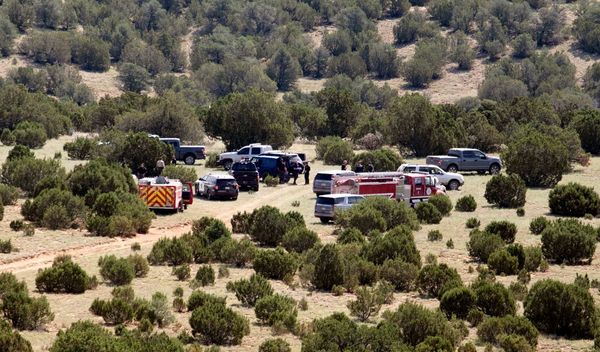A highly invasive and destructive pest that attacks the roots of vegetables and can cause significant crop loss has been discovered in a Hervey Bay backyard.
Last week, Biosecurity Queensland confirmed it had detected a microscopic, parasitic worm species known as guava root-knot nematode (Meloidogyne enterolobii) in southern Queensland.
The pest has been known to affect sweet potato, chilli, cotton, ginger, guava, papaya, soybean, watermelon, tobacco and a variety of other plants.
Guava root-knot nematode was first detected in Australia in the Northern Territory in September. Since then, it has been found in North Queensland and Hervey Bay.
University of Southern Queensland's Gavin Ash described nematodes as "microscopic worms" that infect the roots of plants and vegetables.
"They reduce the roots of the plant, so the plant looks unwell, maybe it'll look like it's got nutrient deficiencies," Professor Ash said.
"However, over time they will build up in the soil and can cause significant crop losses.
"It's affecting things like sweet potato. It will make the fruit look awful and no-one will want to eat it."
He said other species of nematode were not uncommon in crops, but this variety was particularly destructive and had managed to move across the state.
"This one is more aggressive, has a wide host range and has adapted to tropical conditions."
Professor Ash said one of the major concerns was that guava-root knot nematode was very difficult to remove from the soil once it became established.
"Once you do get it in the soil, it is very hard to eradicate," he said.
"Once it's established, you basically have to start looking at other crops.
"Some grass crops such as sugar cane might work, but all those other vegetable crops, those high-value crops, they'll be affected by it."
'Devastating' impacts
Hervey Bay community gardener Judy Hutley said she was concerned the rare pest could threaten her precious patch.
Ms Hutley and her husband Bill built the garden from the ground up before the pandemic.
She says gardening is one of life's greatest joys.
"I don't know whether I like the hard work, but I like the results. [The] flowers, vegetables, fruit trees whatever it might be," she said.
Despite having a green thumb since her childhood days, Ms Hutley had never heard of the microscopic worm.
"It is something that home gardeners, community gardeners and farmers need to know about," she said.
Guava root-knot nematode can be easily transmitted through contaminated soil and plant material.
Ms Hutley said it would be disappointing to see backyard growers unknowingly spread the pest.
"We can't let it get into community gardens because then it could get into farms and that'd be a crisis," she said.
"We wouldn't want [a pest] that went from here into the community … it would be very devastating."
Sweet potato capital
Fewer than 100 kilometres north of Hervey Bay, Bundaberg produces more than 90 per cent of Australia's sweet potatoes.
Chairman of Australian Sweet Potato Growers and Bundaberg farmer Troy Prichard said the proximity of these new discoveries had growers in the sweet potato capital worried.
"It is definitely a concern to industry if it reaches this far," he said.
"It could already be in Bundaberg in domestic areas now, we just don't know."
He said the biggest worry for farmers was how the pest would affect the quantity, size and shape of the vegetables, making produce less appealing to buyers.
"Sweet potatoes are a root vegetable, so you'll find galling and pimpling on it and they just become unsaleable," he said.
"It would have a major effect on the quality and yield in the region and it'll definitely have an effect on the market."
Mr Prichard said it was an opportunity for domestic and commercial growers to rally together.
"We would encourage all growers to double down on their biosecurity plans," he said.
"We encourage everyone if they do suspect that they have something that looks different or a little bit suspicious, to definitely report it and get it tested.
"We're a strong farming region and that means that if we can all help each other it's definitely beneficial to everyone in the end."
Australia was the last continent, other than Antarctica, where the pest had not been reported.







